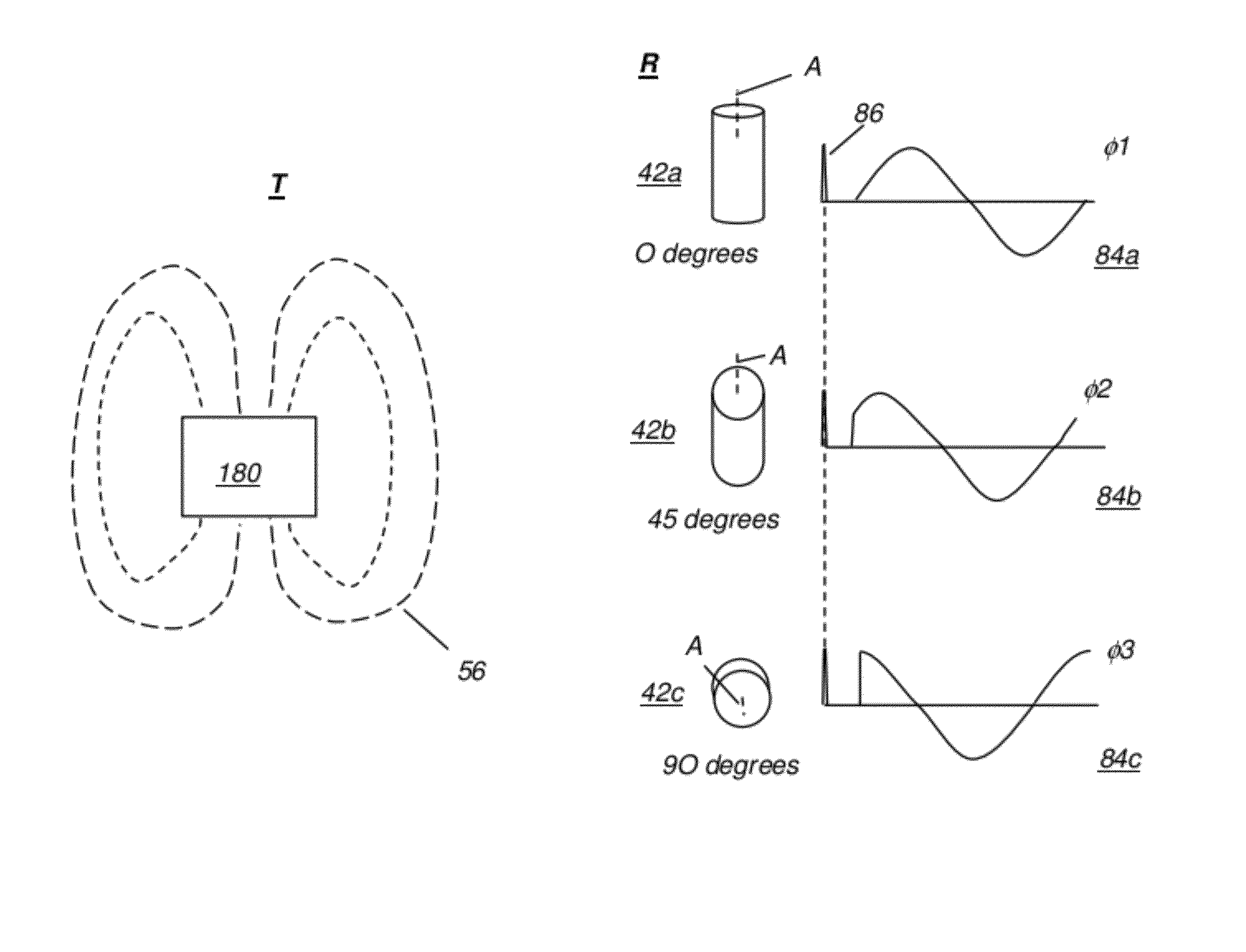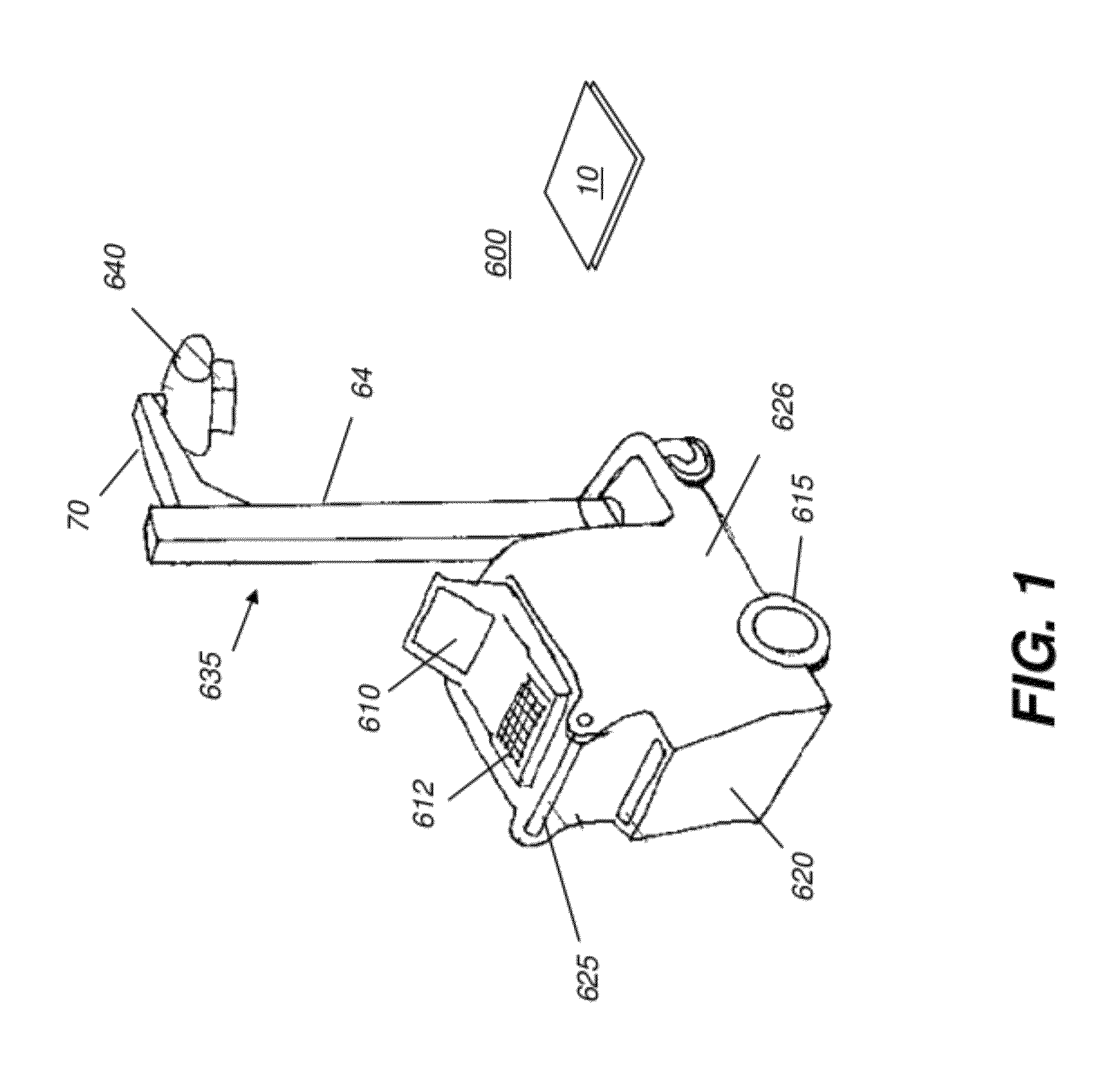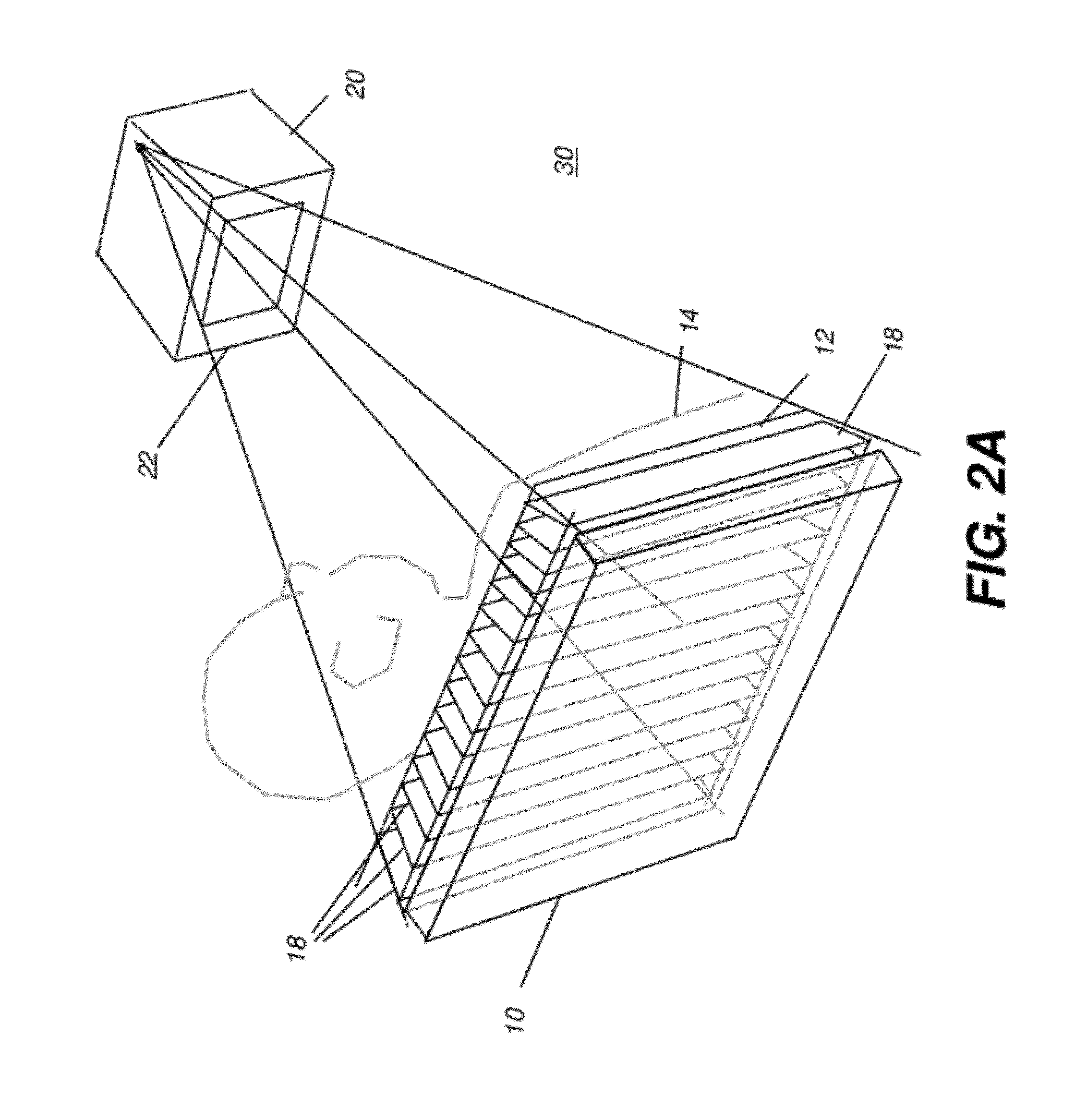Alignment apparatus for X-ray imaging system
a technology of positioning apparatus and x-ray imaging system, which is applied in the field of alignment apparatus for x-ray imaging system, can solve the problems of not being visible to the technician, complicating the alignment task of portable systems, and more difficult to effectively use grids for reducing scattering effects
- Summary
- Abstract
- Description
- Claims
- Application Information
AI Technical Summary
Benefits of technology
Problems solved by technology
Method used
Image
Examples
Embodiment Construction
[0057]Unlike the limited tilt sensing approaches that have been used in a variety of earlier radiography systems, certain exemplary apparatus and methods embodiments provide a straightforward solution to the problem of radiation source-to-receiver alignment that can be used with a number of x-ray imaging systems.
[0058]In the context of the present disclosure, the term “imaging receiver”, or more simply “receiver”, may include a cassette that has a photostimulable medium, such as a film or phosphor medium, for example, or may include a detector array that records an image according to radiation emitted from the radiation source. A portable receiver is not mechanically coupled to the radiation source, so that it can be easily and conveniently positioned behind the patient.
[0059]As used herein, the term “energizable” indicates a device or set of components that perform an indicated function upon receiving power and, optionally, upon receiving an enabling signal.
[0060]In the context of ...
PUM
 Login to View More
Login to View More Abstract
Description
Claims
Application Information
 Login to View More
Login to View More - R&D
- Intellectual Property
- Life Sciences
- Materials
- Tech Scout
- Unparalleled Data Quality
- Higher Quality Content
- 60% Fewer Hallucinations
Browse by: Latest US Patents, China's latest patents, Technical Efficacy Thesaurus, Application Domain, Technology Topic, Popular Technical Reports.
© 2025 PatSnap. All rights reserved.Legal|Privacy policy|Modern Slavery Act Transparency Statement|Sitemap|About US| Contact US: help@patsnap.com



